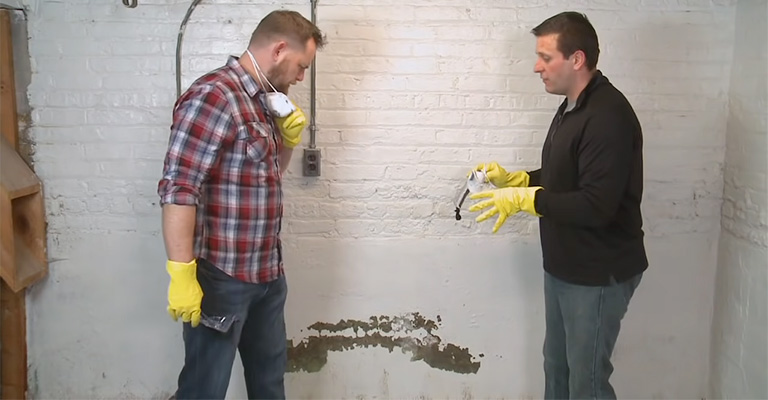A garage is a versatile space, often serving as a storage area for vehicles, tools, and other belongings. Unfortunately, it’s usually enclosed and damp environment can also become a breeding ground for mold.
Mold growth poses a risk to the structural integrity of your garage and can also negatively impact your health and the air quality within your home.
If you’ve discovered mold in your garage, addressing the issue promptly and effectively is crucial. The mold in your garage can spread rapidly, so it needs to be eliminated as soon as you notice it.
If you want to kill the mould, you can use bleach, vinegar, hydrogen peroxide, or a commercial mold remover. Use a stiff-bristled brush to scrub the area next. The area should then be rinsed with water.
In this guide, we will explore various methods and steps you can take to get rid of mold in your garage, from identifying the causes of mold growth to implementing proper cleaning and prevention techniques.
Why Does Mold Grow In The Garage?
When your garage door is opened, or in some cases, closed, it is exposed to the elements, unlike the interior of your home.
Unlike a regular door, the garage door does not have a tight seal between its edge and the ground, making it particularly vulnerable to water damage.
Heavy rains or snow can cause pools of water inside your garage. Also, wet or snow-covered shoes and tires from bikes or cars left in the garage can accumulate moisture.
Is the garage where you wash your car? Most garages see a lot of water. Your garage contains many items. Think about what you keep in there.
It is not uncommon for mold to grow on cardboard and other paper products, as well as on wood, fabric, and even concrete during the wintertime, especially when it is painted.
Growing mold in a garage with poor drainage, poor ventilation, and little natural light is easy.
Tackle Mold In Garage ASAP!
As mold spreads, you must eliminate it immediately if you notice it in your garage. You can use bleach, hydrogen peroxide, distilled white vinegar, or a commercial mold remover to kill mold.
After that, scrub the area using a stiff-bristled brush. Rinse the area with water once you’ve finished cleaning. Once the mold is gone, repeat the process.
You should take appropriate safety precautions when cleaning mold with chemicals.
Protect your eyes and ears wearing gloves, goggles, and a face mask in a well-ventilated environment. The mold remediation company should be contacted if you have a severe mold problem.
As you scrub, you need to contain spores as you go. When cleaning your garage, spray warm water on the affected area to prevent mold spores from spreading.
You should spray the mold with bleach or a commercial cleaner to neutralize and lift the mold spores. Mixing hydrogen peroxide with distilled white vinegar is safe, but mix them separately if you use both.
You should use a stiff-bristle brush to scrub the area once the cleaner has been applied and let it sit for a few minutes. If there is still mold on the surface, rinse it with water and repeat the procedure.
You should completely dry the affected area after you have scrubbed and removed the mold.
Take certain precautions when cleaning mold in your garage on your own.
You should wear masks, gloves, and glasses when handling any chemical cleaning product, especially bleach.
How To Remove Mold From The Garage Ceiling?
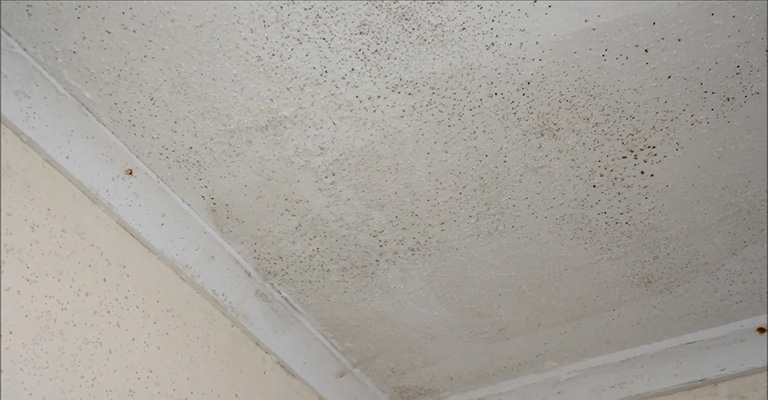
Cover everything with plastic sheets before removing mold from your garage ceiling. After spraying the antifungal cleaner on your ceiling, let it set and spray again.
Take care to clean away any mold growth. Lastly, spray with an antifungal solution. After several days of drying, keep the garage well-ventilated.
How to Protect Your Garage Against Mould?
A garage’s dark, moist, and unventilated conditions can create a breeding ground for mold. This article will discuss some of the most effective ways to prevent mold from growing.
Be Smart About Storage
If possible, consider replacing your cardboard boxes with plastic storage bins. Alternatively, you can store materials like wood, cardboard, and fabric in a drier area. A good starting point is to keep them off the floor.
Upgrade Your Construction Materials
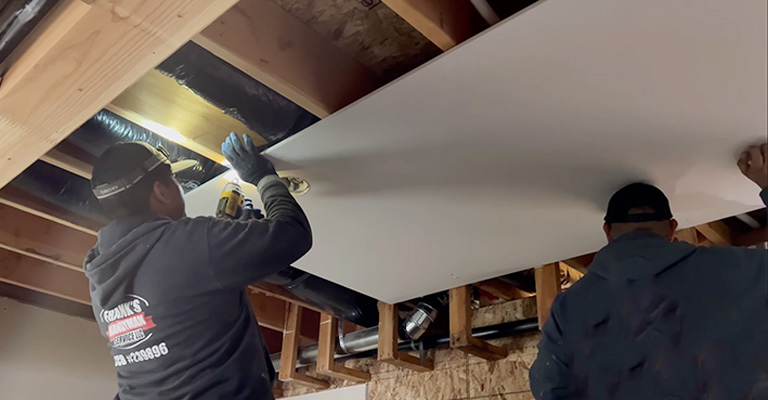
Wood is a major source of organic matter for mold. The wooden studs in your garage were likely installed in an older home, which is a magnet for mold.
You can prevent spores’ growth by installing mold-resistant materials such as metal and aluminum in your garage.
In addition to drywall, fabric, and paint, mold also likes to grow on those materials. When painting your garage’s walls or concrete floor, choose mildew-resistant paint.
Combat Mold With Chemicals
Certain chemical products, such as color-treated silica gel and activated alumina, can absorb excess moisture.
The dishes can be kept in your garage on shelves near water-prone items like rags, watering cans, and water hose attachments.
Keep Your Garage Ventilated
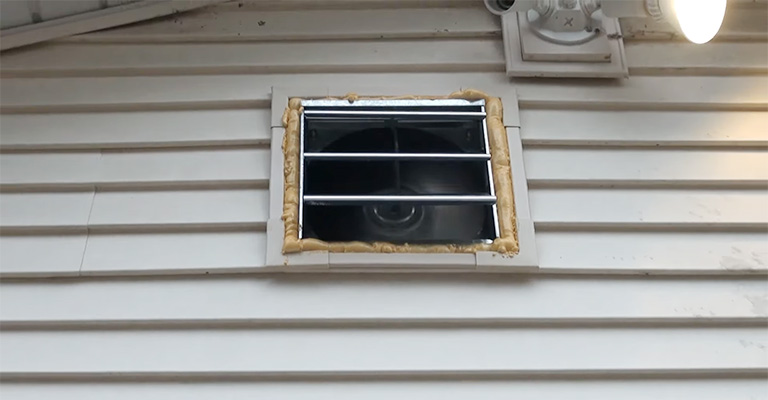
As fresh air circulates in your garage, mold is less likely to grow, and the temperature and humidity will be controlled.
If your garage has a window, try to keep it open for a couple of hours when the weather is nice. If you prefer not to close the garage door immediately, you may keep it open for a few minutes.
Dehumidifiers may be helpful if your garage does not have windows or if humidity remains a problem.
Using this method will help reduce air moisture. To prevent mold and mildew, you should maintain a relative humidity of 60% or less in your garage.
Furthermore, natural light helps prevent mold growth. If you have them, keep your garage windows uncovered so light can enter.
Also, these windows should be kept clean. Likewise, you should take care of any windows on your garage door.
Get Rid Of Standing Water
You can still get water into your garage even if your garage is well-sealed, as wet boots and tires can get in through the gaps. Regularly mop, squeegee, or sponge away standing water to prevent mold growth.
A better drainage system in your garage may also solve the pooling problem in your garage. A drain will need to be installed and the slope of the floor adjusted.
Weather-Proof Your Garage Door
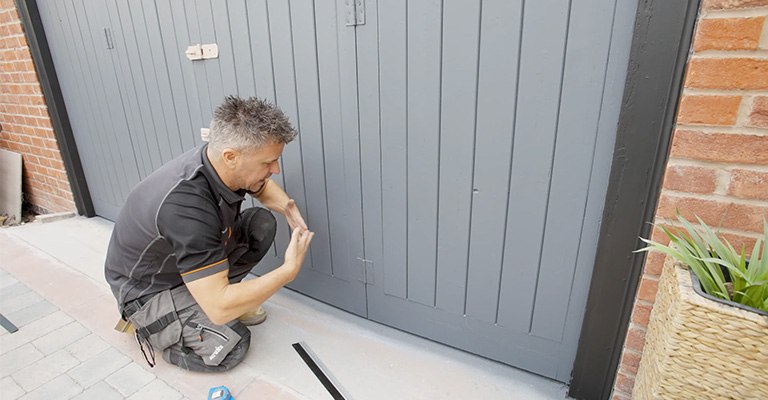
Moisture breeds mold, so it is essential to have a properly sealed garage door to prevent it from infiltrating your home. It is important to ensure that the weather stripping around the perimeter of your garage door is snugly attached to the frame.
You may need to repair or replace weather-stripping if it appears loose or if it has tears. If you’re handy, you can do it yourself. You can also contact a technician to help you with your garage door.
Is It Normal To Have Mold In Your Garage?
Keeping your garage dry and well-ventilated is essential to prevent mold from growing.
This is because mold thrives in moist, dark, stale environments. It is common to experience mold problems; even the most diligent homeowners can experience them.
Do Dehumidifiers Remove Mold?
Conditions that favor mold growth will facilitate its spread. By reducing humidity, dehumidifiers can help prevent mold from growing inside your home, not kill it. As a result, the best way to deal with it is to eliminate its source.
Can Mold Grow In A Garage In The Winter?
If snow and chunks of ice are stuck to your car overnight, they may not melt for hours, causing your garage to retain moisture. This provides mold with a perfect environment for growth.
Final Words
Consider hiring a mold tester to analyze the extent of the mold problem if you notice mold growing in your garage.
Your tester will fully inspect your mold situation and alert you to any mold hiding in difficult-to-see areas of your home, such as the crawl space.
We recommend hiring a professional mold remediation team if mold is found beyond your garage.
Regardless of whether the mold is contained within your garage, a large amount may be better handled by professionals who can altogether remove all traces of mold.

